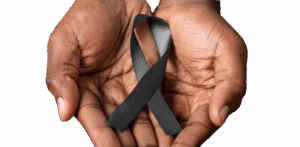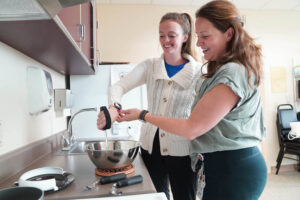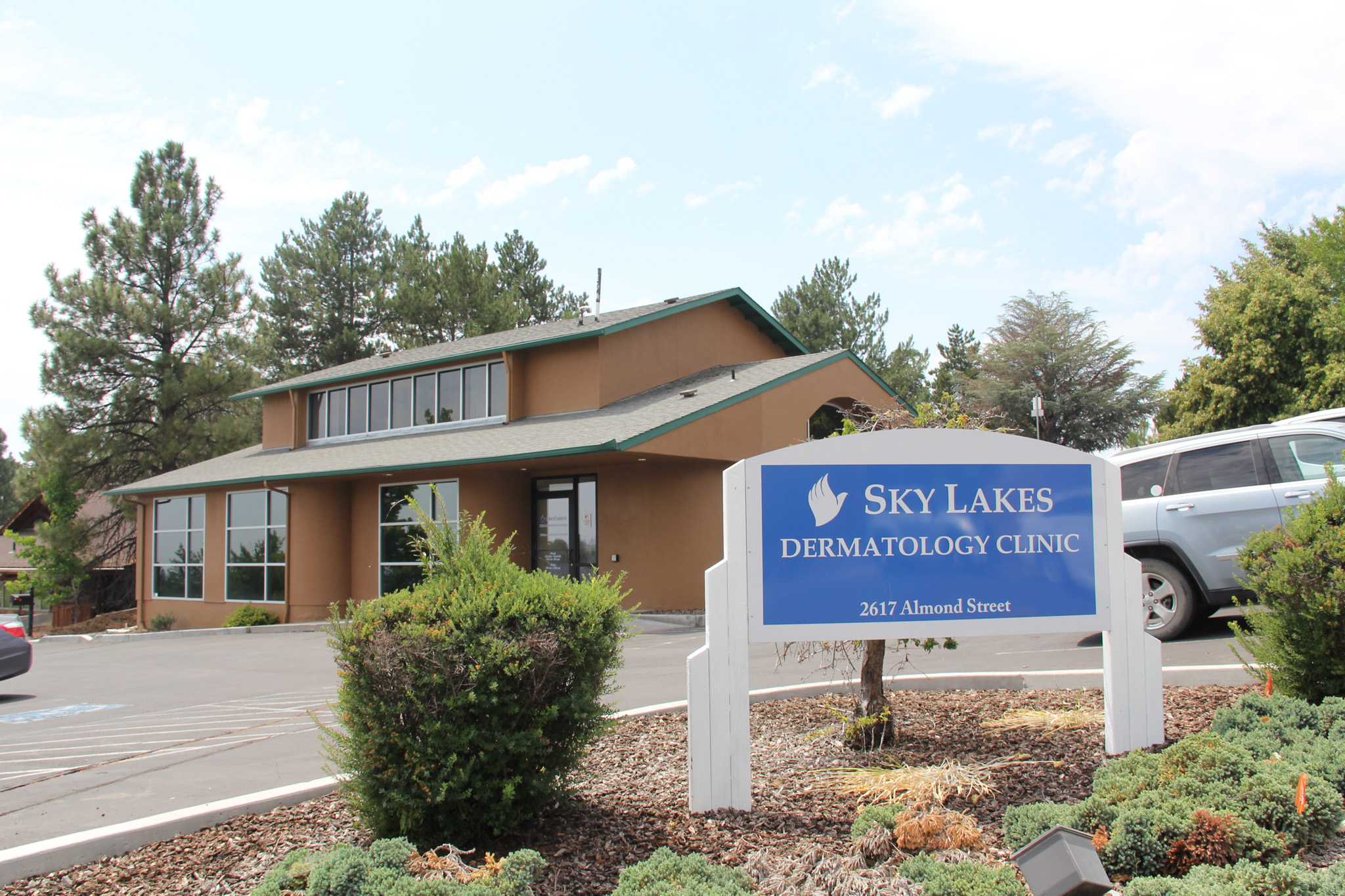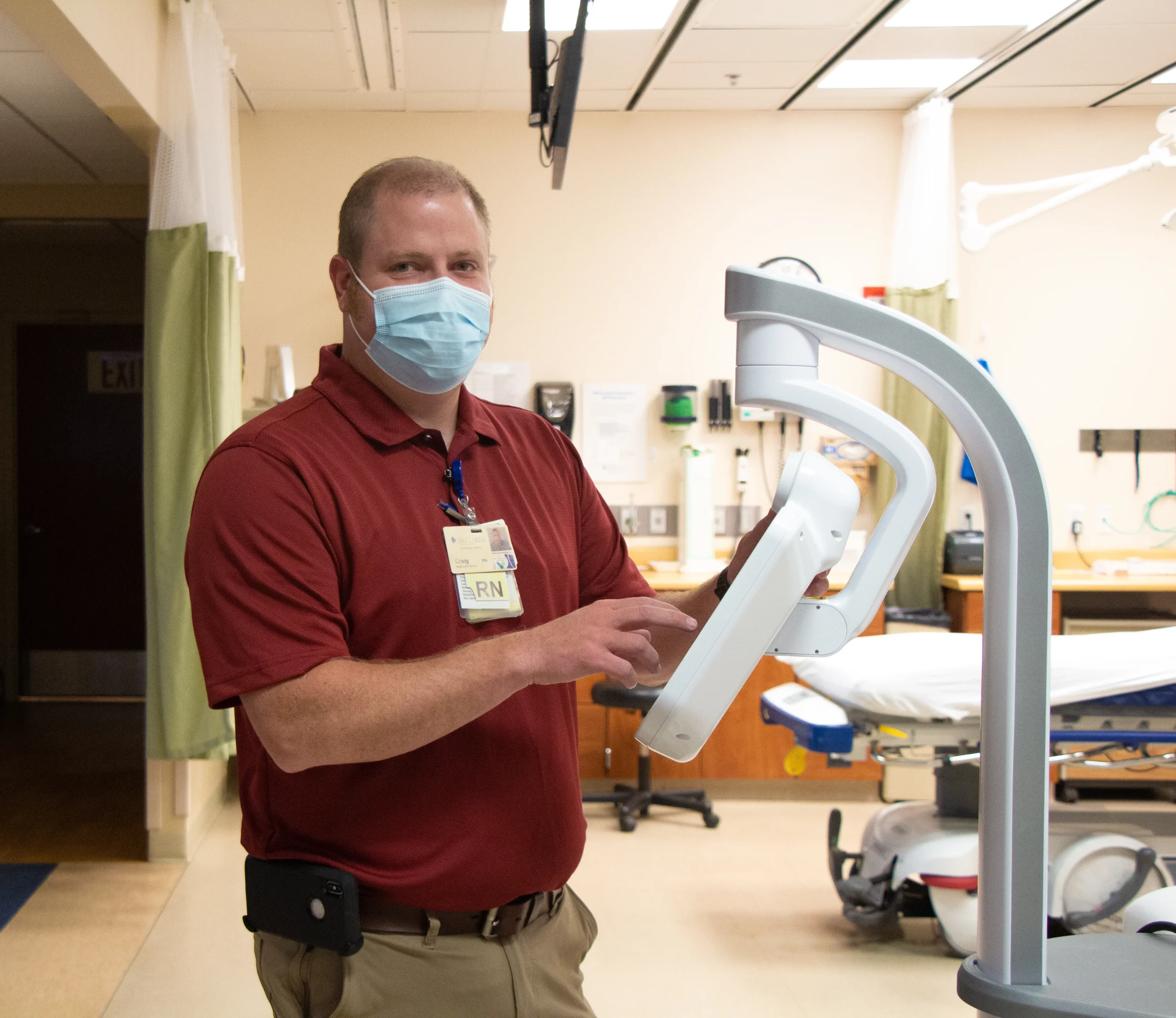
New Robot in the Emergency Department Increases Access to Stroke Care
Category
Author
Sky Lakes recently upgraded our Stroke Robot to the TelaDoc Mini, an incredible asset to our Emergency Department and Stroke Program.
Sky Lakes contracts with Providence TeleStroke, a network of on-call neurologists that diagnose and treat strokes within seconds of a stroke patient arriving in an emergency room bed. There is a national shortage of neurologists and access to neurologists is already extremely limited in smaller hospitals. The TeleStroke program allows hospitals like Sky Lakes to have access to neurologists from Alaska or Missouri in a matter of seconds.
The Teladoc Mini is newest Teladoc model- its small footprint doesn’t take up a lot of space in our emergency department and it connects to the network in the hospital. This service allows us to get neurologists in front of stroke patients in record time. The on-call stroke specialist is in front of a laptop with a headset and is looking at our patients and emergency department in seconds of being called. There are 41 providers on shift at any time in the TeleStroke network that are available immediately with backups on-call. Currently, 19 Oregon hospitals use Teladoc and Telestroke.
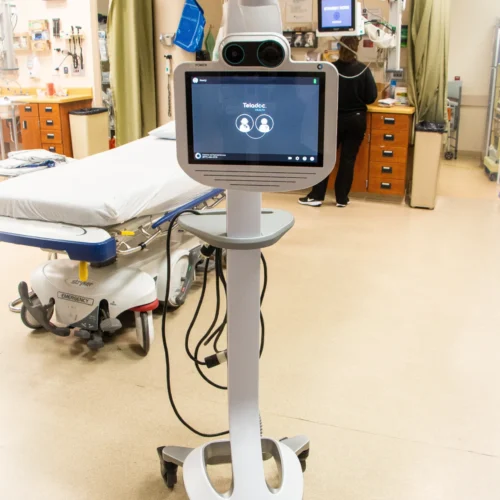
One of the coolest things about the Teladoc mini is that the provider can control the camera to better access and see patients. The camera pans, tilts, and zooms on top of also being high definition. Providers can remotely and accurately assess pupil response from ten feet away!
The TeleStroke program hosts a smooth process and system that relies on extensive collaboration. Although the technology itself is impressive, the most important thing that the stroke robot does is it saves stroke patients and helps limit brain damage without patients needing to seek specialized care elsewhere. You can stay in your hometown during a stroke emergency-Highly specialized care meets you where you’re at.
When you can get a specialist to the bedside immediately you can stop and reverse cerebral ischemia- when the blood supply is cut off to the brain. This saves lives and prevents disability.
Strokes are emergencies. Just like heart attacks need emergency medical attention, strokes do too. Many people wait hours or even days to seek medical attention for a stroke. Please do not do this!
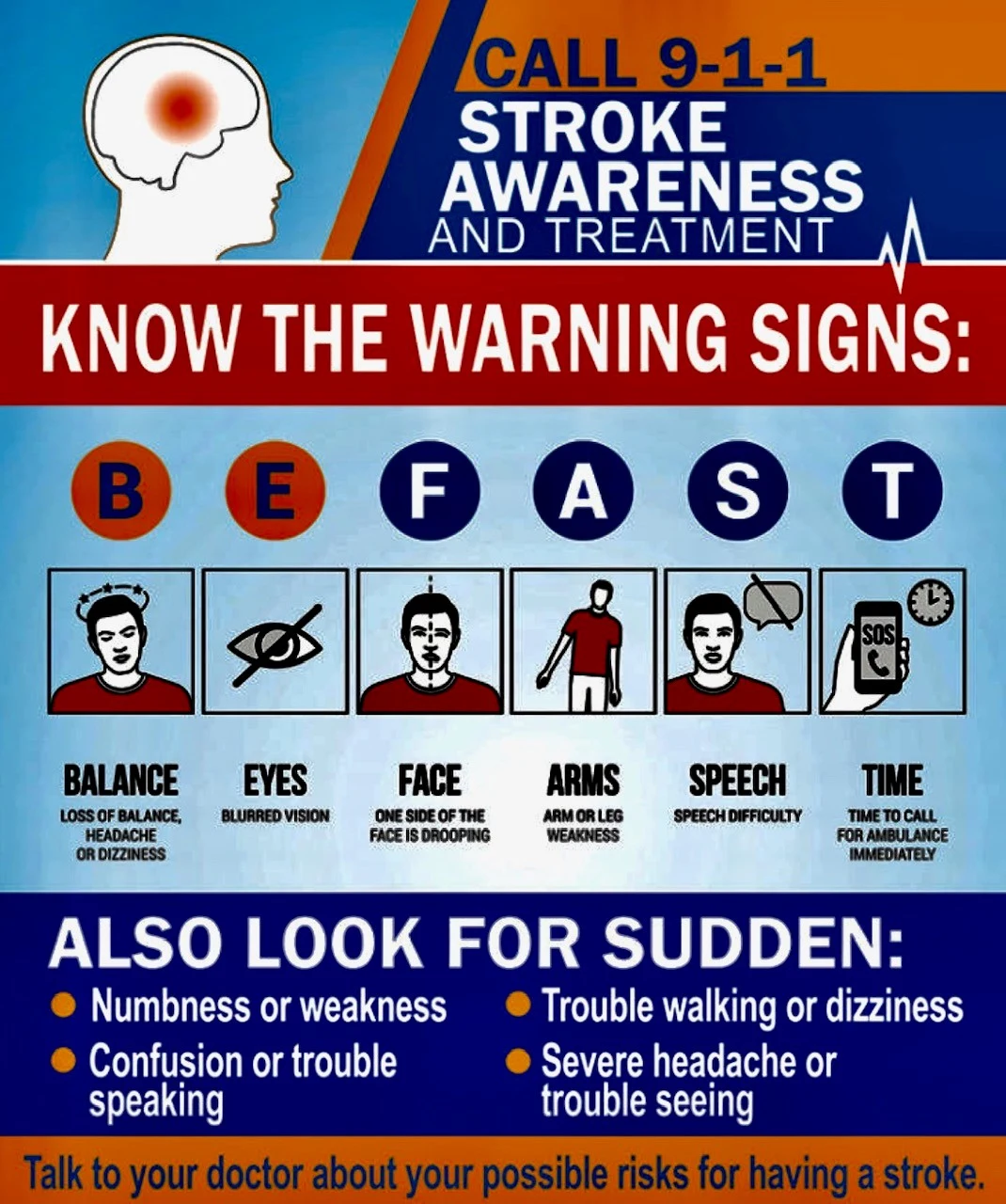
As soon as you are aware of signs of stroke in yourself or someone else, it’s incredibly important you seem immediate medical attention. Every minute counts during a stroke and there is a time frame of 4.5 hours after a stroke begins in which you must seek drug treatment before significant and potentially disabling brain damage occurs.
Remember this acronym: BEFAST (Balance, Eyes, Face, Arms, Speech, and Time)
Loss of balance, headache, dizziness, blurred vision, drooping in the face, limb weakness, and speech difficulty are all symptoms of stroke and must be assessed by a medical specialist quickly. Time is important to treating strokes, if you or a loved one experience any of these symptoms, please seek medical attention immediately.




